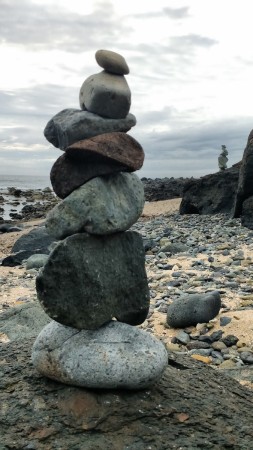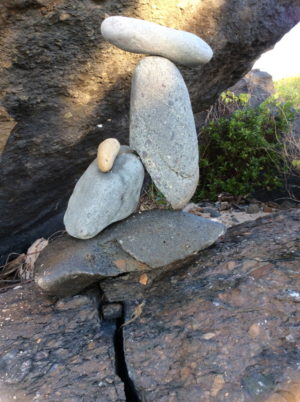creating with nature

January 29, 2016
On my self crafted art retreat in Mexico this year, I was drawn to create rock pile sculptures. This is a human impulse with a rich history and meaning. The term cairn is Scottish from the 16th century. Many were created and still exist to guide travelers. Called apacheta in South America, the rock piles are most commonly used to mark a trail, but also a place in the landscape to take notice, such as a burial site. Sometimes they are made, each passerby adding a piece, for good luck as with the Navaho. Other times to create a shrine or for pure self expression. Called "Inutsuk" by the Inuit, the rocks are huge, stacked larger than life size – and can be seen from great distance in the open landscape.
There is something sensual and transforming: sureness of rock, dense sound of stacking, joy of improbable balance
This practice is not without controversy, especially in wilderness areas where "leave no trace" is extolled. In endangered landscapes, moving rocks can upset the delicate natural balance. On complicated nature trails, clear rock pile trail markers are essential. Do not build under these circumstances.
artistic and spiritual
My practice here on this ever shifting, semi-tourist Pacific beach near the village of Troncones is both artistic and spiritual. Originally inspired by an amazing rock balancer just down the beach, when her/his work was nowhere to be seen this year, I decided to try. I have created many near our casa, both to mark a special place and to feel that joy of creating with nature. Through the tides, winds, passersby, fisherman, horses – most have stayed.
temporal art
Like all art made with natural materials, it is just a matter of time, and they will return to the earth. Much of the beauty is the temporal nature, to leave what I have "co-created" – give it back, with a prayer of thanks for this dance of creativity.
rock artist
Peter Juhl is a local Minnesota artist who has been creating temporal rock sculptures for 20 years. Check out his mastery of balance with the smooth rock from Lake Superior shores.



